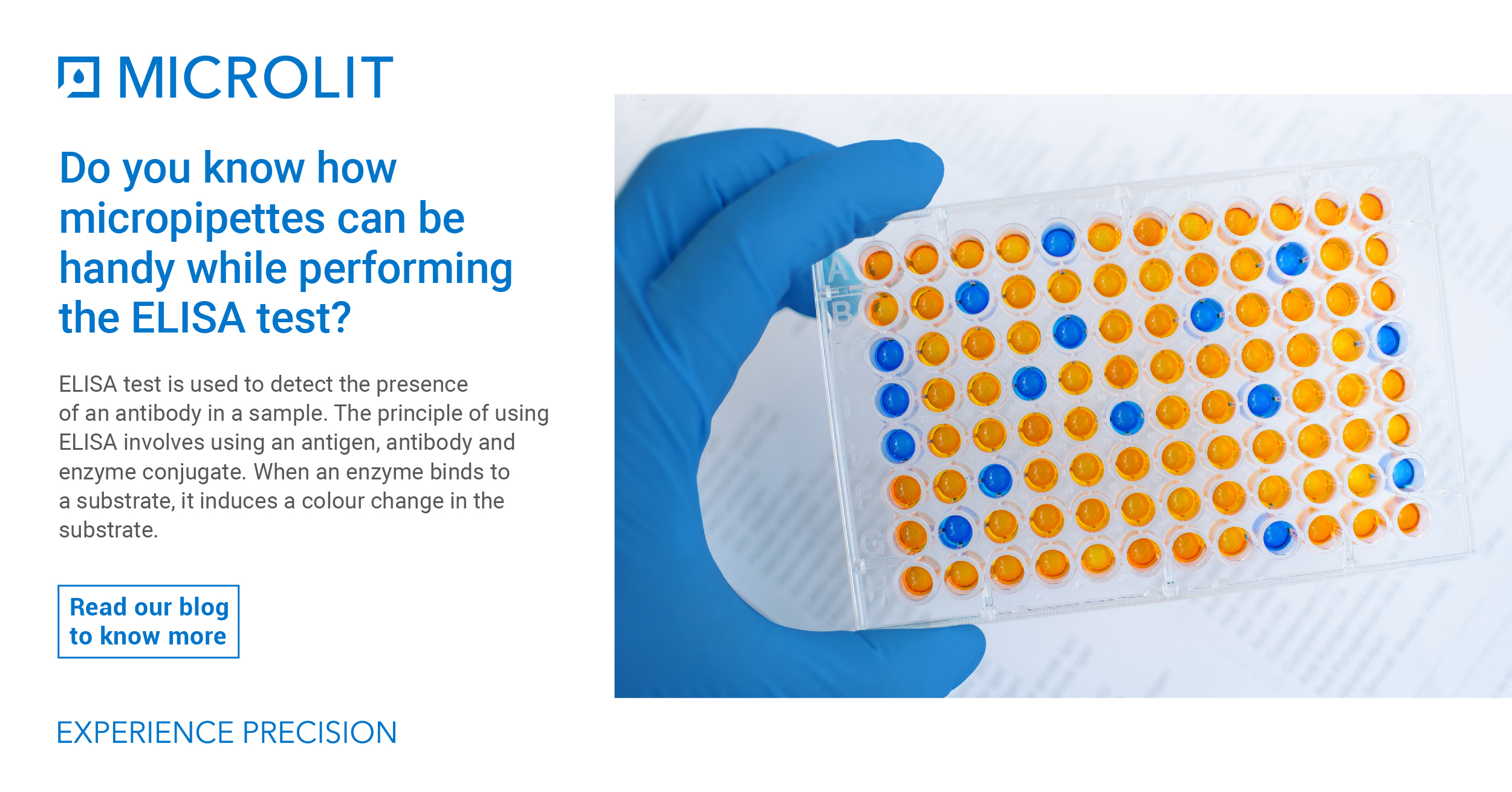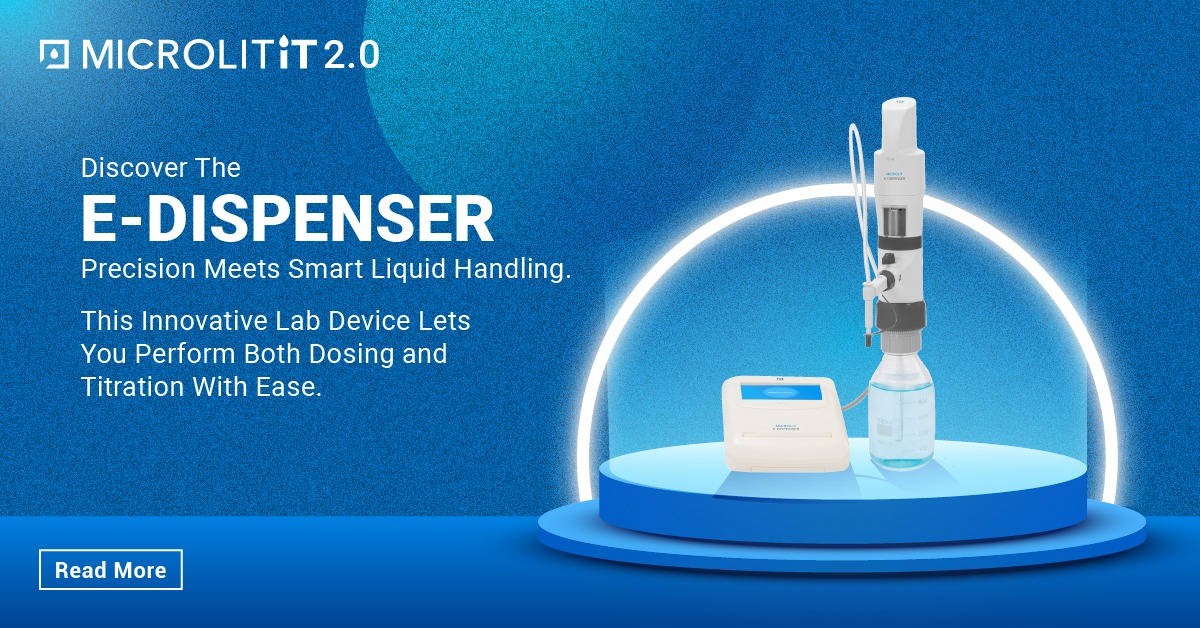Understanding ELISA Test Basics and How Micropipettes Can be Handy While Performing These Tests
- August 17, 2021
- ENQUIRE NOW

What is an ELISA test?
The Enzyme-Linked Immunosorbent Assay (ELISA) technique uses an enzyme to discover the presence of a specific protein also known as target protein in a given medium, usually blood or serum. If the presence of protein is detected, then ELISA can determine the quantity of the same protein too. These tests are usually performed to detect antibodies in samples which are usually related to infectious conditions related to bacteria or viruses like HIV and Syphilis to name a few.
It is used as a screening method for several such medical conditions and gives reliable results to proceed further with the diagnosis.
How does ELISA work?

Simply put, antigens (which usually are the infectious agent) present in the sample to be tested attach to a given surface. As a next step, an antibody that is likely to attach to the antigen is spread over the surface where the reaction is taking place. This leads to the binding of antigens and antibodies. Then, the enzymes are applied on the same surface where the antibody gets linked to the enzyme and any remaining antibody is washed off. In the end, a substrate that has the unique ability to attach to a specific enzyme is added.
In case the enzyme and the substrate bind, a visible reaction occurs which is indicated by a change in the color of the medium, thus indicating the presence of the suspected antigen in the given sample.
How is ELISA performed?
Once the blood or urine sample is collected and sent to the laboratory, the technician adds the sample to a plate that has the antigen spread over the surface. This antigen is attributed to the same condition for which an individual is being tested for.
If the given sample contains the antibodies related to the antigen of concern, then the two will attach to each other. To confirm the attachment, an enzyme will be added to the reaction medium followed by the substrate for the enzyme. A color change will confirm the presence of antibodies towards the related disease. The intensity of the color will indicate the amount of antibody present and will help in the quantification of the antibody.
ELISA tests allow quick and accurate analysis and at the same time are easy to conduct with minimal equipment. The basic requirements for ELISA are pipettes, plate washer, ELISA reader (which uses the intensity of color to convert to quantify the antibody present) and software that will interpret and show results through a computer.

Pipettes are needed to transfer a predefined volume of any reagent or fluid to a plate which is also known as a microtiter plate as it has multiple small wells where the antibody–antigen reaction takes place. These pipettes help in the transfer of small quantities of solution with great accuracy.
ELISA washer does the job of washing the microtiter plates. This needs to be done with a reagent known as washing buffer after every antigen antibody reaction to prevent mixing of the samples and obtain accurate and high-quality results.
How do micropipettes contribute towards greater accuracy of ELISA?
The medium used to transfer the sample and reagent in the microwell must transfer the right quantity in minimal time;this is where micropipettes add a lot of value.

Microlit RBO-12 channel micropipette helps in performing the ELISA test accurately
Transfer of solution is something that needs to be precise and accurate to the smallest measurable volume of fluid possible. Micro pipetting which is also done using the mouth can be cheaper but is highly time-consuming, gives inaccurate results and is difficult to do repetitively for several samples.
Moreover, there is a limit to which micro pipetting by mouth works. Instruments like micropipettes which work on a different but advanced principle than simple pipettes are far more accurate in dispensing the right quantity of fluid.
These micropipettes work in a manner that any residual fluid is blown out from the plastic tip, thus ensuring the complete and accurate transfer of the fluid. This stops the mixing of samples that may cause inadvertent errors.
In general, the micropipettes are easy to use, help in transferring multiple samples in a short time period, and aid in achieving greater accuracy.





